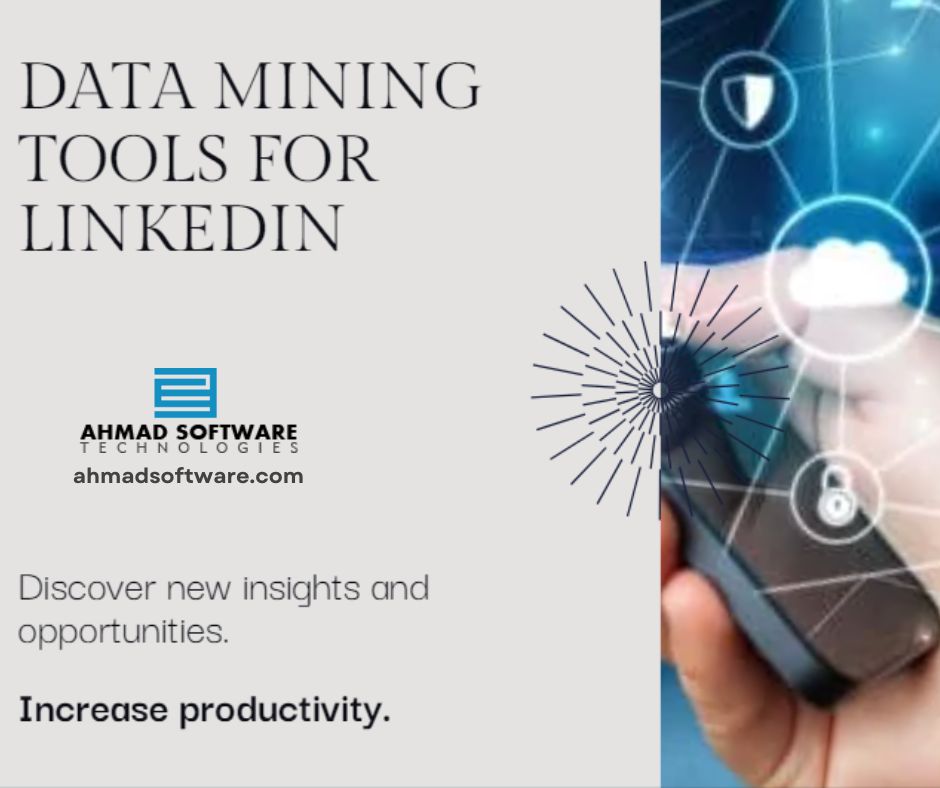Introduction
LinkedIn, the professional networking platform, has evolved into a treasure trove of valuable information for businesses, recruiters, and professionals alike. In this digital age, the use of LinkedIn data mining tools has become increasingly prevalent, offering a means to extract insights, streamline recruitment processes, and facilitate targeted marketing. This article explores the dynamics, applications, benefits, and ethical considerations surrounding LinkedIn data mining tools, shedding light on how they are reshaping the landscape of professional information retrieval.Understanding LinkedIn Data Mining Tools
LinkedIn data mining tools are specialized software designed to extract and analyze information from LinkedIn profiles and associated data. These data scraping tools leverage web scraping techniques, automation, and algorithms to navigate through the vast network of LinkedIn, collecting relevant data such as user profiles, connections, job histories, skills, and endorsements. Some of the best LinkedIn data mining tools are LinkedIn Lead Extractor, LinkedIn Company Scraper, LinkedIn Recruiter Scraper, and LinkedIn Sales Navigator Extractor.
Key Features of LinkedIn Data Mining Tools
Profile Scraping
LinkedIn data extraction tools excel at scraping individual profiles, extracting details such as education, work experience, skills, and endorsements. This feature is invaluable for recruiters seeking comprehensive candidate profiles.
Connection Analysis
These lead generation tools can analyze connections between LinkedIn users, helping businesses identify mutual connections, potential clients, or candidates. This network analysis enhances outreach strategies and fosters meaningful professional connections.
Skill Extraction
LinkedIn scraping tools can identify and extract skills listed on profiles. This information is instrumental for businesses aiming to understand industry trends, identify skill gaps, or tailor their products and services to specific markets.
Job Posting Analysis
For recruiters and HR professionals, these tools can analyze job postings on LinkedIn, providing insights into current job market trends, in-demand skills, and industry-specific hiring patterns.
Applications of LinkedIn Data Mining Tools
Recruitment and Talent Acquisition
One of the primary applications of LinkedIn web mining tools is in recruitment. HR professionals and recruiters can efficiently identify potential candidates, analyze their qualifications, and streamline the hiring process.Lead Generation
Businesses can leverage these tools for lead generation by identifying potential clients, partners, or collaborators within their industry. Analyzing connections and shared interests facilitates targeted outreach efforts.Competitor Analysis
LinkedIn lead generation tools can aid in competitor analysis by extracting information from competitor profiles. This includes insights into their team structure, employee skills, and hiring strategies, providing valuable competitive intelligence.Market Research
Researchers can use LinkedIn data mining tools to gather insights into market trends, industry developments, and the professional landscape. This contact information is crucial for making informed business decisions.Benefits of LinkedIn Data Mining Tools
Efficiency and Time Savings
LinkedIn contact finder tools automate the process of information retrieval, saving businesses considerable time compared to manual methods. This efficiency allows professionals to focus on analysis and decision-making rather than data collection.Targeted Outreach
By providing detailed insights into user profiles, connections, and skills, these tools enable businesses to tailor their outreach efforts. Whether it's reaching out to potential clients or identifying ideal candidates, targeted communication is key.Data-Driven Decision Making
The wealth of data extracted by LinkedIn mining tools empowers businesses to make informed decisions. From understanding market trends to identifying talent pools, data-driven insights drive strategic choices.Ethical Considerations
User Consent
Obtaining user consent is fundamental to ethical data mining. LinkedIn's terms of service explicitly state that automated data collection without user consent is prohibited. Ethical LinkedIn data mining tools should prioritize user privacy and adhere to these terms.Data Accuracy and Verification
Ensuring the accuracy of the extracted data is crucial. Misinformation can lead to flawed decision-making. Responsible users of LinkedIn data mining tools should verify the accuracy of the data and refrain from making assumptions based on unverified information.Respect for Privacy
Respecting user privacy is paramount. LinkedIn users may not be aware that their data is being mined, and as such, data miners should exercise discretion and transparency in their operations.Compliance with LinkedIn Policies
LinkedIn has specific policies regarding data scraping, and ethical data mining tools should strictly adhere to these guidelines. Violating these policies can result in legal consequences and damage the reputation of the users involved.Conclusion
LinkedIn data mining toolshave become indispensable assets for professionals seeking to harness the wealth of information available on the platform. Whether for recruitment, lead generation, or market research, these tools offer efficiency, precision, and data-driven insights. However, ethical considerations must remain at the forefront of their usage. Respecting user privacy, obtaining consent, and adhering to platform policies are non-negotiable aspects of responsible data mining. As businesses continue to navigate the professional landscapes of platforms like LinkedIn, the ethical use of data mining tools will play a crucial role in maintaining trust, integrity, and the positive impact of these technologies on the professional world.How to use the software










